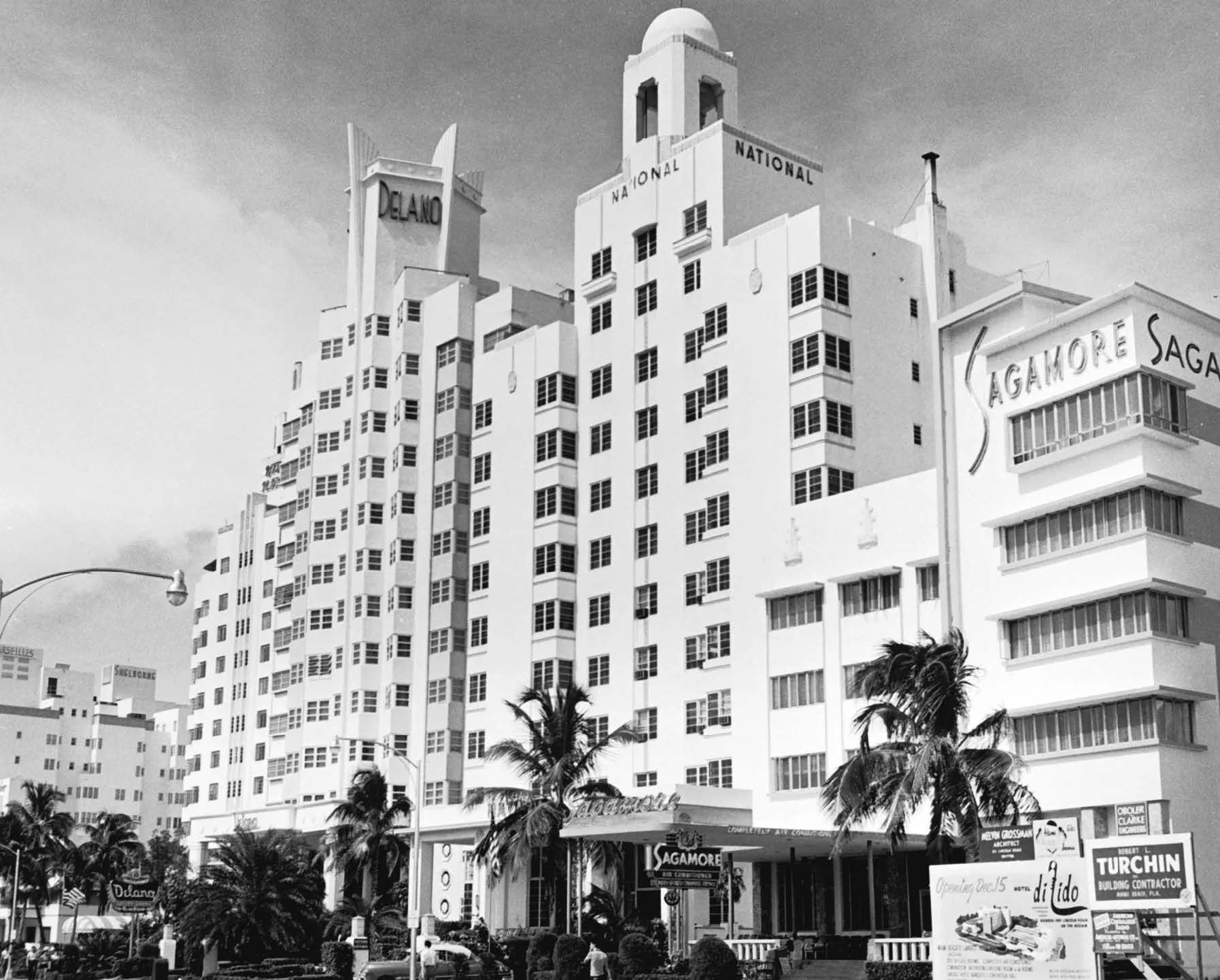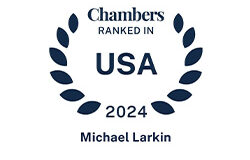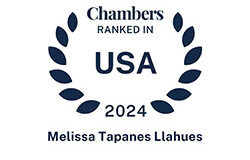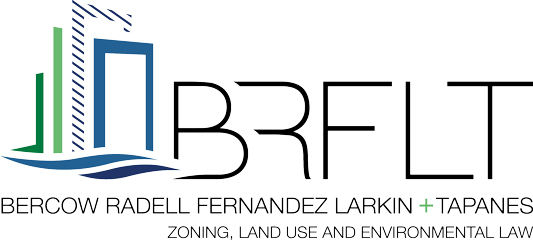The $2.5 Billion Plan to Transform Six Historic Blocks in South Beach
November 4, 2024When it’s complete in 2027, Miami’s “Billionaires’ Beach” will be a sandier, sunnier version of Manhattan’s 57th Street or London’s Bishops Avenue.
The bold name was coined by Michael Shvo, one of several developers collectively pumping more than $2.5 billion into a handful of blocks along Collins Avenue, the arterial that runs parallel to the city’s ruler-straight coastline.
Many of the world’s best hotel brands are now preparing to fly their five-star flags over South Beach for the first time, a monumental rebirth for an area whose history began as the seat of Miami’s luxury tourism industry.
In the late 1930s it filled in with the city’s first beachfront resorts, all designed in white stucco by the great architects of the era: Lawrence Murray Dixon, Albert Anis and Morris Lapidus, to name but a few.
Among the voluptuous angles and ziggurat rooflines dominating its nascent skyline were the curving Raleigh, the Miami-modern Shore Club, the porte-cochered Shelborne and the crown-topped Delano. All of them still stand, albeit faded from decades of deed transfers, salt-air weathering and all manner of renovations—good, bad and tacky.
Miami’s cultural and commercial clout has been on an upward trend for years, putting it on par with London, Paris and New York for luxury seekers, art connoisseurs and business travelers alike. And with high-end hotels broadly adopting the model of selling multimillion-dollar residences to go with their posh restaurants, spas and concierge services, there’s suddenly a viable way to finance thoughtful renovations of these legacy buildings, at a time when Miami’s real estate market is red-hot.
All it takes is a few dozen steps to see which hospitality juggernauts are planting stakes on Billionaires’ Beach, which Shvo defines as the blocks between 14th and 20th streets on Collins Avenue. Rosewood Hotels is revamping the Raleigh, Auberge Resorts Collection is modernizing the Shore Club, California-based Proper Hotels is taking on the Shelborne, and Bulgari is souping up the motel-like Seagull—all lined up in a row.
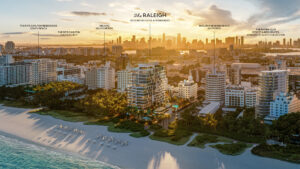
This staggering transformation, says Miami developer Alex Witkoff, is a direct result of a series of 2017 tax cuts that catalyzed a well-heeled migration to the Magic City. As major corporations such as Citadel and Starwood Capital Group relocated there, “Miami became an international marketplace in a relatively short time,” says Witkoff, “and that has led to more sophisticated, more successful people coming and demanding the utmost quality.”
The pandemic only fueled Miami’s fire. It steered a fresh set of luxury travelers, as well as
nationally recognized chefs and tech entrepreneurs, to the city’s lockdown-lax, sunny climes. And that growth has been sustained even as the world opened back up: A recent report by the Greater Miami Convention & Visitors Bureau recorded a healthy 13% rise in domestic tourism from 2021 to 2023. Among the top 25 hotel markets in the US this year, CoStar data show that Miami’s occupancy rate and revenue per available room rate ranks No. 1. More Than $2 Billion Worth of New Miami Hotels Some of the spending by developers along Collins Avenue, and the brands newly attached to these iconic buildings
Especially telling is a shift in who’s visiting: From 2021 to 2023, the 45-plus demographic grew 10%, while the party-hearty 18-to-34 cohort shrank 13%. (It’s also a lot of New Yorkers, though other big markets are represented, including Atlanta, LA, Brazil, Colombia and the UK.)
Even more germane to Billionaires’ Beach was a 2019 zoning law in which the Miami Beach
City Commission relaxed height restrictions on new buildings between Collins Avenue and the ocean. It was a pivotal moment, says Shvo, who petitioned for the change before acquiring the Raleigh that year.
The cost of restoring an 80-year-old building like that, Shvo says, “didn’t make sense without another source of income” for the project. Breaking even on an eight-figure renovation ultimately requires more than 60 hotel rooms—even if they’re going for $1,000-plus a night. But adding a brand-new tower so you can lure the megarich with eight-, even nine-figure condos? That’s a bet worth taking.
Shvo’s reenvisioned Raleigh, a $1 billion project that is being designed by architect Peter Marino and managed by Rosewood, will add a 17-story residential tower next to the historic hotel and link those structures with two adjacent art deco landmarks (the South Seas and the Richmond) to form a 3-acre complex. The property’s famous scroll worked pool, which for years was the height of Miami’s social scene, will remain the complex’s centerpiece. At 13,000 square feet, the top penthouse is currently listed for $150 million. Pricing for three-bedroom apartments starts at $10 million.

A block away at the Shore Club, Auberge has hired interior designer Bryan O’Sullivan—who redid parts of London’s Claridge’s—to rethink the hotel while architect Robert A.M. Stern builds a new 18-story residential tower next door. Although they’re separated by almost a century, great pains have been taken to ensure both projects share a cohesive design vernacular, says Kemper Hyers, Auberge’s chief creative officer. “Robert Stern has created a softer art deco style in the new tower, mirroring details of the 73-room hotel, like portholes and arches, but with a sophistication and edit that feels 100% of today,” Hyers says. (The residences are listed from $9 million.)
A few blocks in either direction, more legends await a fresh start. Massive cranes surround the 1950s Nautilus, whose central staircase was built to accommodate regular appearances by a full orchestra. It was purchased in 2023 for $165 million by Sonesta International Hotels.
The Shelborne is a $205 million investment by Proper, a brand known for its bold, Kelly Wearstler-designed hotels in cities such as Los Angeles and Austin; it’s set to reopen next year.
The Delano, which experienced a go-go resurgence in the 1990s under the ownership of Ian Schrager, was sold in a multi-property deal to Accor’s Ennismore hotels—the team behind Gleneagles, Scotland’s coolest countryside resort—at an estimated value of $200 million.
Perhaps most anticipated is the $242 million overhaul of the 1940s Versailles, just beyond the technical border of Billionaires’ Beach. In 2026 it will reopen as an Aman Resorts hotel with 56 rooms, plus a 22-condo tower designed by Japanese architect Kengo Kuma.
The question on locals’ lips is whether all of this represents a bubble waiting to pop. Detractors argue housing prices—a bellwether for the district—may be in jeopardy, with UBS Group AG’s 2023 Real Estate Bubble Index placing Miami at the top of the list of overvalued US markets.
Rising sea levels and climate change are sending insurance rates through the proverbial roof, a concern for which Shvo had no comment.
But right now there are few, if any, signs of a slowdown. Case in point: Auberge’s $120 million penthouse is already in contract—two years out from completion. “Miami Beach is the one true American Riviera,” says Hyers. “This reinvention is going to be just as storied.”
